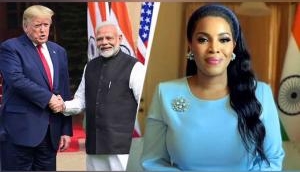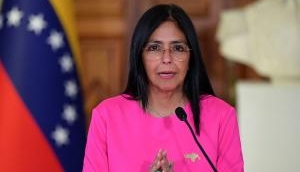Modi-Jinping meeting in Xiamen reiterates that peace at the border must be maintained

During their hour-long bilateral meeting at Xiamen following the BRICS Summit, Prime Minister Narendra Modi and Chinese President Xi Jinping came to an undersatnding that to keep the relationship moving forward between India and China, the border must remain quiet.
This is the first time the two leaders have met after the end of the 73-day border stand-off at Doklam. In fact, the resolution took place on 28 August, just days before the summit.
“There was a sense that if relationship is to go forward, then peace and tranquility on border areas must be maintained,” Foreign Secretary S Jaishankar told the media before leaving for Myanmar, the second leg of the PM's visit.
The importance of diplomacy
Jaishankar says discussions were very constructive and forward looking and that both sides recognised the need for better communication between security and defence personnel.
The ‘Astana Consensus’ which India had been referring to throughout the Doklam crisis, that says India and China should not let differences become disputes was reaffirmed at the bilateral meeting, Jaishankar said.
While China had been in attack mode throughout the standoff, using state-run newspapers and spokespersons, India had remained quiet but firm and had reminded China of the existing understandings and how diplomacy could be the only way out.
Moreover, conflict could not have been an option with so much at stake between India and China. This seems to have been the drift of the bilateral meeting at the port city of Xiamen.
Beside the need for peace and tranquility on the border areas, a release by the Chinese Foreign Office says that Xi pointed out “that China and India should stick to the basic judgement that two sides constitute opportunities instead of posing threats to each other.” It also spoke of how there is potential for China-India cooperation in economic and social development.
Shrikant Kondapalli, a professor of Chinese Studies at JNU says a one-hour bilateral meeting is a good gesture for recasting bilateral ties. “After Doklam, the meeting tried to bring the focus back on economic cooperation and focus etc.,” he says, adding how progress in these fields needs to be monitored.
Monitoring terror in Asia
Interestingly, while India has been raking up the issue of terror in all bilateral and multilateral fora, terrorism did not come up in the bilateral meeting. It is significant because China blocking Masood Azhar from being included in the UNSC list of individuals under global sanctions, has been a point of discord between both countries. Jaishankar confirmed that terror was not discussed in the bilateral meet.
A day earlier, however, the BRICS declaration mentioned Pakistan-based terror groups, including the Jaish-e-Mohammad, the Lashkar-e-Tayyeba, and Tehreek-e-Taliban Pakistan. While JeM and LeT figured because of India, which has been lobbying for action against them, the mention of TTP raises questions as they are Pakistan septic groups.
And as a former diplomat says, it shows a straight give and take - that the way the balancing has been done is significant. The Heart of Asia declaration in 2016, after the meeting in Amritsar, used similar language.
But for India, this is is a good development, an incremental one from the last BRICS Summit in Goa. It could give India a bargaining chip when it lobbies again at the UN Security Council (UNSC) for China to lift its hold on Jaish-e-Mohammed chief Maulana Masood Azhar and have him designated a terrorist by the UN.
But what really remains to be seen is how it impacts the Chinese stance on the ground and whether they are ready to act on Azhar as India demands.
First published: 5 September 2017, 18:12 IST





![BJP's Kapil Mishra recreates Shankar Mahadevan’s ‘Breathless’ song to highlight Delhi pollution [WATCH] BJP's Kapil Mishra recreates Shankar Mahadevan’s ‘Breathless’ song to highlight Delhi pollution [WATCH]](https://images.catchnews.com/upload/2022/11/03/kapil-mishra_240884_300x172.png)

![Anupam Kher shares pictures of his toned body on 67th birthday [MUST SEE] Anupam Kher shares pictures of his toned body on 67th birthday [MUST SEE]](https://images.catchnews.com/upload/2022/03/07/Anupam_kher_231145_300x172.jpg)






